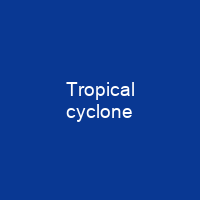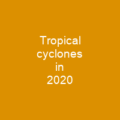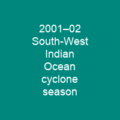Tropical Cyclones: The Unpredictable Giants of the Ocean
Imagine a giant, swirling storm that can devastate entire regions with its powerful winds and torrential rains. That’s what a tropical cyclone is—a massive weather system that forms over warm ocean waters and wreaks havoc wherever it goes. But how do these storms form? And why are they so unpredictable?
The Formation of Tropical Cyclones
Let’s dive into the fascinating world of tropical cyclones. These powerful giants start life as a cluster of thunderstorms over warm ocean waters, typically in the tropics or subtropics. The heat from the ocean fuels these storms, causing them to spin and grow stronger. But why do they form during certain times of the year? It’s all about the angle of the sun and the temperature of the water.
Key Factors for Formation
The sea surface temperatures need to be at least 27°C (80°F) for a tropical cyclone to form. This warmth provides the energy needed, while atmospheric instability and sufficient Coriolis force help the storm maintain its shape. But what happens when these conditions are met? The result is a rapidly rotating storm system with low pressure, strong winds, and heavy rain.
Types of Tropical Cyclones
The term ‘tropical cyclone’ can vary depending on where you are in the world. In the Atlantic and Pacific Oceans, they’re called hurricanes; in the northwestern Pacific, typhoons; and in the Indian Ocean and South Pacific, tropical cyclones. Each region has its own warning centers that monitor these storms and issue advisories to keep people safe.
Global Impact
Around 86 tropical cyclones form annually worldwide, with 47 reaching hurricane strength and 20 becoming intense tropical cyclones. These storms can cause significant damage, from coastal flooding to inland destruction. Climate change is making these events more frequent and intense, as warmer waters provide more energy for the storms.
Tracking and Forecasting
Keeping an eye on these powerful giants isn’t easy. Weather satellites capture visible and infrared images, while reconnaissance flights send dropsondes to measure temperature, humidity, pressure, and winds. High-speed computers simulate storm tracks based on future weather systems, helping forecasters predict where a tropical cyclone might go.
Challenges in Forecasting
Predicting the intensity of these storms is particularly challenging due to their complexity. Scientists use geopotential heights to analyze pressure systems and make regular updates on storm positions. But even with all this technology, there’s still a lot we don’t fully understand about how tropical cyclones intensify.
Impact and Response
The impact of these storms can be devastating. They cause billions in damage, disrupt lives, and sometimes result in loss of life. Preparing for a hurricane involves checking insurance coverage, gathering emergency supplies, and evacuating if necessary. Once the storm hits, response efforts focus on disaster recovery, infrastructure repair, and public health services.
Conclusion
Tropical cyclones are nature’s powerful giants, forming over warm waters and wreaking havoc wherever they go. While we can track them with advanced technology, predicting their intensity remains a challenge. But one thing is certain: these storms will continue to shape our world in ways both destructive and beneficial.

You want to know more about Tropical cyclone?
This page is based on the article Tropical cyclone published in Wikipedia (retrieved on January 25, 2025) and was automatically summarized using artificial intelligence.







